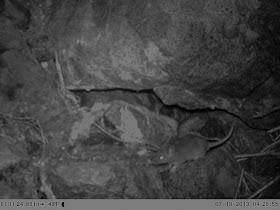 |
| slender salamander |
I was sad to learn of the recent passing of the great herpetologist Robert C. Stebbins. Long before
I met him, I was fascinated with his descriptive and beautifully illustrated field guides to western amphibians and reptiles. Matthew Bettelheim has posted information about Dr. Stebbins
here and is inviting people to share their memories of him. The commentary there will be worth visiting in the next few weeks as Dr. Stebbins encouraged so many people to discover the fascinating world of reptiles and amphibians. My thanks to his family, colleagues and friends for sharing Dr. Stebbins and his legacy.
Tonight, I think I will share some photos of my favorite times with California herps to say my goodbye. So many scaly and slimy adventures of learning and delight.




